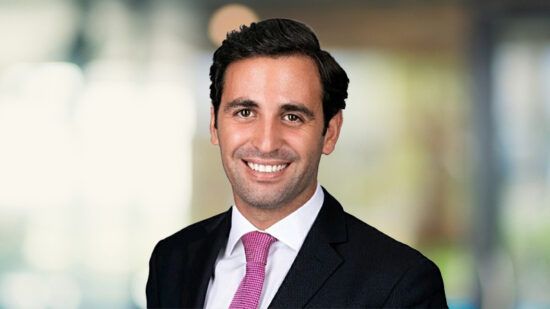For an investor to have achieved the highest return from country funds over the past decade, the investment would have needed to cross borders each year, investing in a total of eight different countries, based on Morningstar’s country categories for Europe.
Perhaps more challenging a fact is that an investor would have had to park their money for two of those years in Greece, including last year. Greece was one of two countries that twice held the honour of topperforming country category. It is unlikely there are many investors who would have had the foresight or the stomach to invest in Greece in recent times.
Norway was the only other country on the list to hit the top spot twice in ten years, and more impressively it achieved the highest calendar year return. In 2009, investing in merely the average Norwegian equity fund would have doubled an investor’s money in euro terms.
In total, moving from Greece in the south to Norway in the north, not to mention half a dozen other countries in between over a ten-year period would have netted a cumulative return of more than 100%.
Cross-country investing
The rewards of rotating country funds are clear, but it pays for investors to base a country decision in conjunction with their view of the overall market including, most importantly, their tolerance for risk.


Norwegian equity funds could be a good option for the bullish investor given that the country’s stock market is dominated by demand-dependent commodity companies. The country’s growth-reliant stocks tend to benefit from energy price rises, particularly oil and gas.
The Morningstar Norway Equity fund category holds more than half of its allocation in the economically sensitive sectors of energy and materials, the highest among all our Europe country categories, so investors should be comfortable with the prospect of devoting a part of their asset allocation to this volatile area of the market.
Switzerland is a better country for bearish investors looking for a place to hide from market volatility. The Morningstar Switzerland Large-Cap Equity category has the lowest beta figure of all the country categories, facilitated by the fact the Swiss market is skewed towards the so-termed defensive sectors of healthcare and consumer staples.
Stocks within these sectors include the staple food-and-beverage group Nestlé in addition to pharmaceutical giants Roche and Novartis. The share prices of these types of companies tend to hold up better during tough economic times relative to the cyclical oil stocks in Norway.
Sweden is an option for the valuation conscious investor given that the Swedish peer group of funds was trading on the lowest P/E ratio of all the continent’s country categories at the beginning of the year. The P/E ratio is a commonly used measure of a market’s investment attractiveness.
The lower the reading, the cheaper the stocks, resulting in more potential for share price appreciation. The one caveat to basing investment decisions largely on valuation is that stock markets can remain cheap for an extended period of time, so it pays to consider a country’s relative valuation together with its fundamental outlook.
Pockets of opportunity
A country’s fundamental prospects are often gauged by looking at its expected GDP. Unfortunately, the growth prospects of individual countries within Europe would do little to stoke positive investor sentiment at present. Most major investment houses are forecasting zero growth for Europe as a whole during 2013, but there are pockets of opportunity.


Germany is forecast to grow 1% while for the more adventurous investor tempted by the equity growth prospects of an emerging country in Europe, Poland is expected to do a bit better at 1.5% during the year ahead. However, investors who invest in an emerging-market country such as Poland should note that the potential for greater equity performance tends to come hand-in-hand with higher volatility in returns.
Political developments
A country’s standalone merits are perhaps best evaluated by analysing relative valuation together with GDP forecasts and other fundamental factors such as political stability. This year has already seen an unexpected result in the Italian general elections and Germany will hold its elections later in 2013.
Polls suggest the incumbent Angela Merkel will be returned to the Chancellorship but a surprise outcome could have short-term implications for the German equity market. Last year’s election of Francois Hollande in France is an example of a new president who, by and large, had a negative impact on the domestic equity market.
These examples serve to illustrate that investors looking at the short- to medium-term outlook for countries should not underestimate political developments, despite the international composition of many of Europe’s bourses these days. For investors who already hold a pan-European equity fund, a single country fund could still add diversification benefit to a portfolio if the pan-Europe fund has historically omitted a particular country in Europe.
An aversion to certain countries is not as uncommon as it might sound. Some of our top-rated Europe equity funds have built successful track records around avoiding certain countries. Gold-rated Comgest Growth Europe and Renaissance Europe have historically avoided Norway while another Gold-rated fund, Kempen European High Dividend, has traditionally underweighted German and Swiss equity.


Performance pattern
From the many fund manager meetings we undertake at Morningstar OBSR, we have noted that European equity managers have on aggregate been underweight peripheral- European equity since the credit crisis. In this respect, the Bronze-rated Fidelity Iberia Fund could be an option for investors wanting to top-up exposure there.
Holding a pan-Europe fund with a bolt-on country fund – whether because of a personal preference or plugging a hole in your equity allocation – is a safer-minded investment approach than putting all your money in one country’s basket. Country funds offer great opportunities and rich rewards at the right time, but it pays to know a country’s key fundamental characteristics and its likely performance profile.
An investor should not pick a country fund whose performance pattern is out of kilter with their own tolerance for risk. The bottom line is that single-country funds can be used to improve return prospects, but we would submit that they are best utilised as one holding in a broader portfolio.







